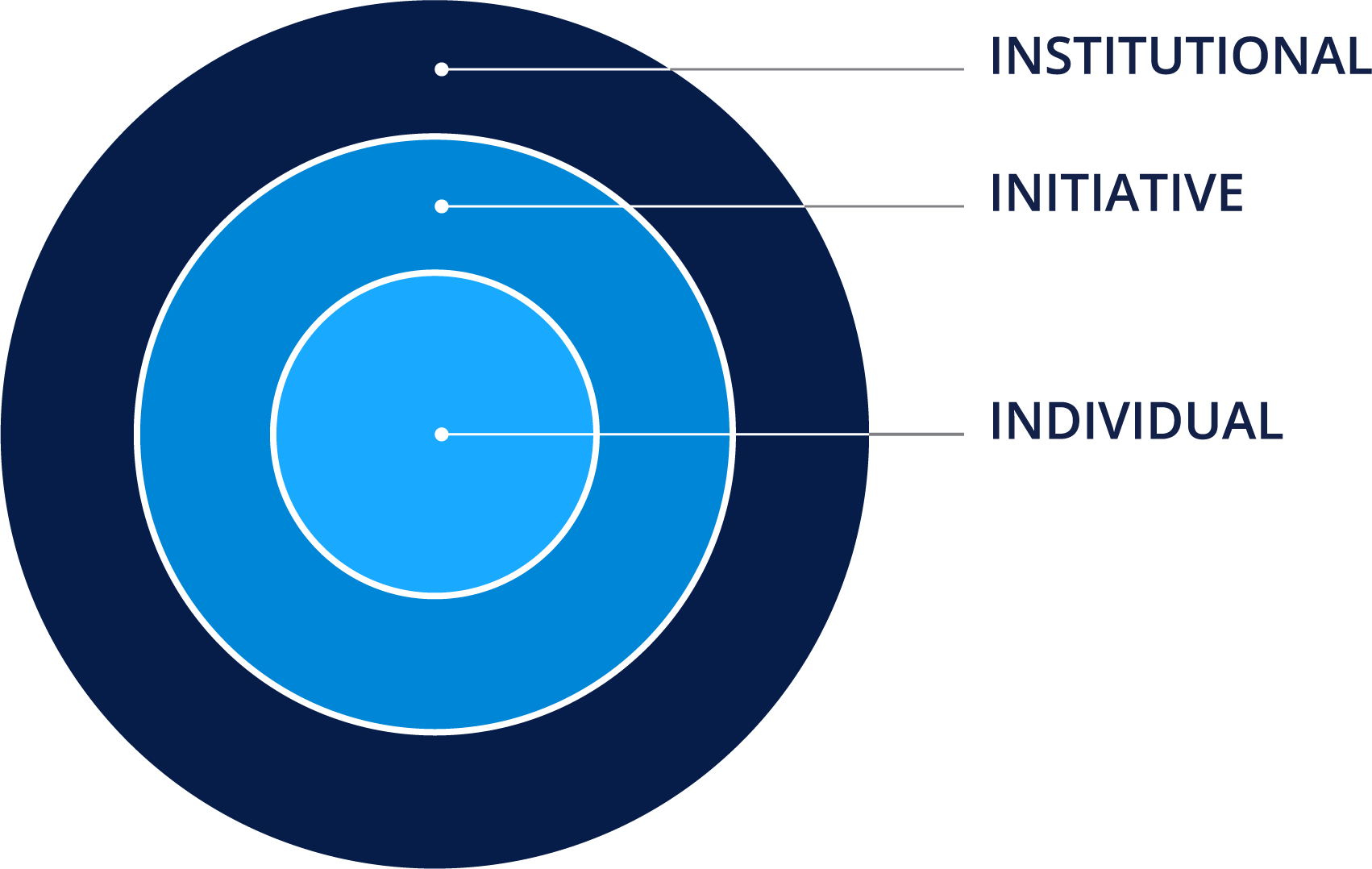Three Targets of Change to Make Organization Transformation Happen
We live in a highly unpredictable world that ushers in great opportunities, as well as turmoil. Embracing change is critical to the survival of our companies, as well as each of us as individuals.

Three Targets of Change to Make Organization Transformation Happen

We live in a highly unpredictable world that ushers in great opportunities, as well as turmoil. Embracing change is critical to the survival of our companies, as well as each of us as individuals. Those that don’t effectively deal with transition and continuous change are destined to struggle (and potentially fail). For example, the survival rate of large organizations is surprisingly low. Of the original Fortune 500 companies in the United States, only 60 still exist. This 87% “failure” rate implies that large complex organizations are not responding well to our changing environment.
A company’s ability to manage change is important because it impacts the response to competition or the performance of the firm or the future growth of the company (Dave Ulrich. 2017. Change Happens: How to make it an opportunity not a threat. Talent Quarterly).
Here are just some of the reasons why change matters:
- Internal response to external demands (i.e., competition, customers, changing global marketplace).
- Intangible value and tangible performance.
- Strategy implementation and differentiation.
- Organizational identity and capability.
- Personal excitement.
- Inventing the future through growth.
Change happens across all industries, and despite the proliferation of research and resources on what it takes to successfully manage change, it is difficult to sustain change (Dave Ulrich, Jon Younger, Wayne Brockbank, and Michael Ulrich. 2012. HR From the Outside In: Six Competencies for the Future of Human Resources. McGraw-Hill Publishing Company). Most change efforts, such as implementing new technology, mergers & acquisitions, corporate restructuring, or revamping the corporate culture, have very low success rates. The key question is: How do we move from change as an event to a sustained pattern?
At the RBL Group, we believe a company has to manage three targets (or levels) of change and ask three questions to make change happen (see Figure 1).

RBL’s 3 Targets (or Levels) of Change
- Individual Change: change has to capture something inside your soul/habits.
- Initiative Change: making change happen on projects.
- Institutional Change: how do we change culture/identity of the firm?
If you try to initiate institutional change, but ignore individual change, your chances of failure increase. The RBL Group believes you have to work on all three levels of change at the same time. You need to cut across all three targets of change and ask why, what, and how to sustain change efforts.
Key Questions to Address at Each Level of Change:
- Why should we change?
- What should we change to?
- How (e.g., how do you prioritize)?
The Three Change Targets and General Principles of Execution
Execution occurs at three levels:
- Individual: Do I have the ability to make sustainable change in my personal leadership behavior?
- Initiative: Do we have the ability to accomplish projects or initiatives on time and within budget?
- Institution: Do we have the ability to change our culture so that we have new patterns of how we work?
Ultimately, execution needs to occur across all three targets. Individuals need to learn, master, and demonstrate new behaviors. Organization initiatives need to happen, and organization culture needs to be institutionalized.
There are some general principles of execution that can be captured under three broad categories:
- Why: The ability to execute increases when there is a compelling case for getting something done.
- What: The ability to execute increases when the outcomes of the execution are clear and compelling.
- How: The ability to execute increases when the process for getting things done are clear around:
- Social support: engaging many in the execution challenge.
- Systems support: making sure that HR and management systems (e.g., budgeting, technology, and talent) reinforce the execution challenge.
- Leadership support: ensuring that leaders invest in the execution challenge with both their time and passion.
- Analytics support: tracking the progress on an execution challenge so there is both accountability and learning.
Observations and Recommendations
- Most companies focus their time on one target of change. For example, most companies spend 60% or more of their time on initiative change. If you spend too little time on institutional change and too much time on initiative change the danger is that change becomes “the flavor of the month.”
- Try to find a balance across the three targets of change. One size does not fit all. It’s best to think of having a menu of things you can do in each level of change. Most of the menu of choices of change should focus on the how and less on the why and what of change.
- The number of initiatives are plentiful at many companies today. Every initiative should have a theme (e.g., cost). It is better to focus leaders on the theme of change than the initiative. For example, provide a menu of items to manage the cost theme around an initiative. When you are 60-70% through an initiative change, you should start the next initiative.
- Successful change, planning, and communication requires focus on all three targets of change. How do you make change the passion or heart of the individual? What is the case for change for the organization, initiative and employees?
- Focus on impact and concept to action. What is required by the organization, initiative, and employee for the change?
- Engage others in the process. How will you recognize success at all three levels - tracking and measurements?
